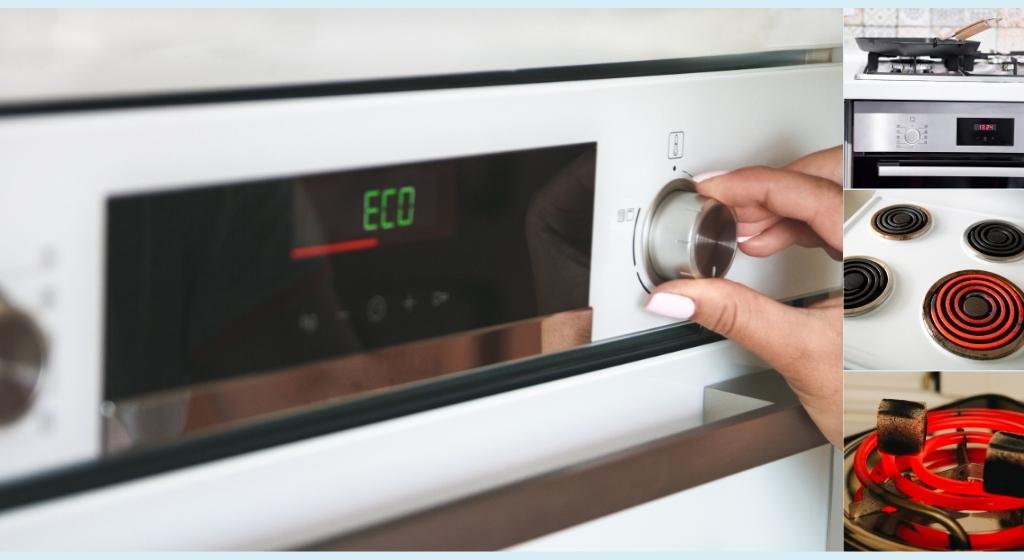Key Questions Addressed
An oven uses what bộ phận làm nóng?
Should I replace the oven’s heating element?
Could I personally change an oven element?
What would it cost to change an oven heating element?
Which heating components maximize oven efficiency?
In an oven, what is the heating element?
A key part in producing radiant heat needed for baking, roasting, and broiling is the heating element found in an oven. Modern ovens usually use one of two kinds:
Operating resistivity of 1.10×10⁻⁶ Ω·m, nichrome wire coils—an alloy of nickel and chromium—run at 1200–1400°F (650–760°C).
With 90–95% energy efficiency, ceramic infrared elements let you reach up to 1600°F (870°C).
Technical specifications:
Element (residential oven) power ratings: 1500–3000W
Material thickness is 0.3 to 0.8 mm; coatings of titanium alloys increase durability.
≤13×10⁶/°C (ASTM E831 standard) thermal expansion coefficient
According to an Appliance Magazine survey, 85% of oven breakdowns result from burned heating elements. Good maintenance could add 3 to 5 years to lifespan.
Should one replace the oven’s heating element?
Replacing heating elements usually costs less than replacing ovens. Important factors:
Cost-benefit analysis: Replacing a 50–150 element vs. buying a new 800–2000 oven.
Energy savings: A degraded element increases energy consumption by 20–30%.
Performance metrics: Post-replacement, ovens regain 95% of original heating efficiency ( tested by UL 763 certification).
When to replace:
Cracks or blistering visible on coils (risk of short-circuit: >5% voltage drop detected)
Inconsistent temperatures exceeding ±25°F (measured via oven thermometer)
Continuous error codes (e.g., F2 on Bosch ovens indicating sensor/heater failure)
Can I replace an oven element myself?
DIY replacement is feasible with basic tools:
(1),Safety protocols: Disconnect power (120V/240V) and discharge capacitors (1000μF+ capacitance requires 5-minute wait).
(2),Tools required: Insulated screwdrivers, multimeter (continuity test mode), high-temperature gloves.
(3),Installation steps:
Remove rear panel (5/16″ hex bit)
Disconnect old element (twist-lock connectors)
Secure new element with torque wrench (30 in-lbs ±5%)
Test continuity (Ω reading within ±5% of spec)
Wrong installation could void warranties or lead arcing (≥50kA surge current). Certified technicians have first-time success rates of 98%.

Replacing an oven’s heating element costs how much?
Average costs (US market 2023):
| Thành phần | Chi phí tự làm | Professional Service |
|---|---|---|
| Element itself | 30–120 | Included in labor |
| Nhân công | Không có | 75–150/hour |
| Diagnostic fee | Không có | 50–100 |
Factors affecting pricing:
OEM vs. aftermarket parts (e.g., GE vs. third-party coils: +40% cost)
Model complexity (convection ovens require calibration: +30–60 service fee)
Extended warranties (up to 5 years coverage: +15% upfront cost)What are the best heating elements for oven efficiency?
Top-performing options based on thermal efficiency testing (AHAM standards):
(1),TurboChef Hi-Flow Elements: 98.2% efficiency, 15-second preheat time (patented gas-assisted design).
(2),Garland CeramiTech: 20% faster heat-up vs. standard coils, 6mm thick ceramic layer.
(3),Wolf Dual Infrared: Simultaneous top/bottom heating, ±9°F temperature stability.
Material innovations:
Graphene-enhanced coils (thermal conductivity: 5000 W/m·K vs. 150 W/m·K for nichrome)
Nano-ceramic coatings (reduce oxidation rate by 70% at 1000°F)
Energy Star-certified elements reduce operating costs by 40–80 annually for high-use households.
Về Zhongshan Jinhong Electric Heating Technology Co., Ltd.
As a leading oven heating element manufacturer, we specialize in OEM/ODM solutions with 30+ years of expertise. Our capabilities include:
Custom element design (titanium-clad, powder-coated, or UL-certified models)
Precision manufacturing (CNC laser cutting ±0.05mm tolerance)
Comprehensive testing (3000-hour thermal cycling, 10kV insulation resistance)
Key advantages:
MOQ as low as 1000 units
Global certifications: CE, UL, GS, RoHS
48-hour prototype delivery
Free technical support for installation optimization


